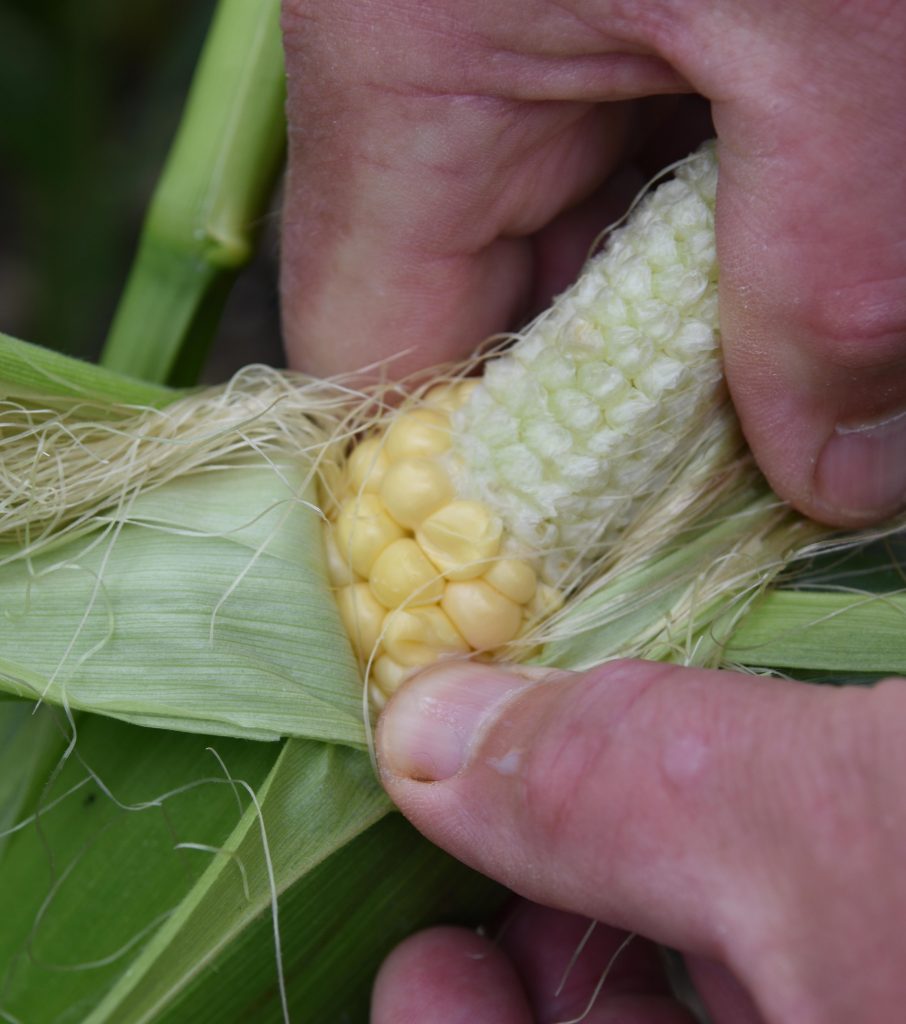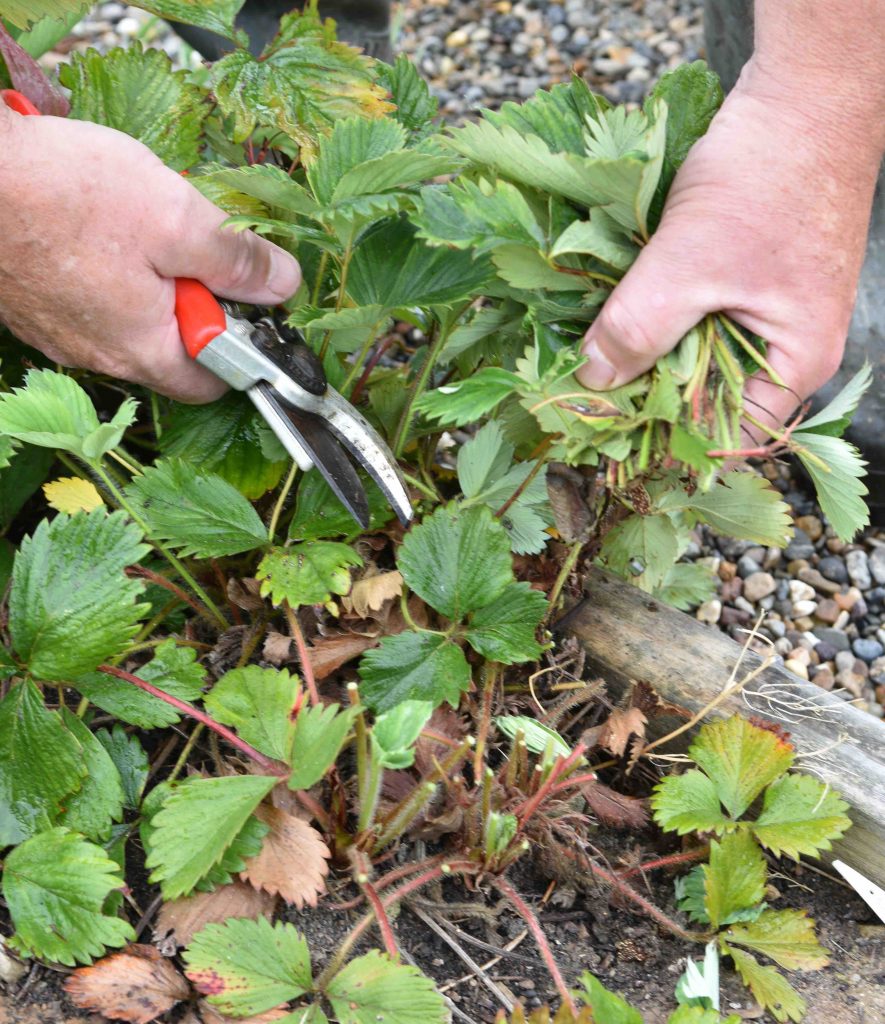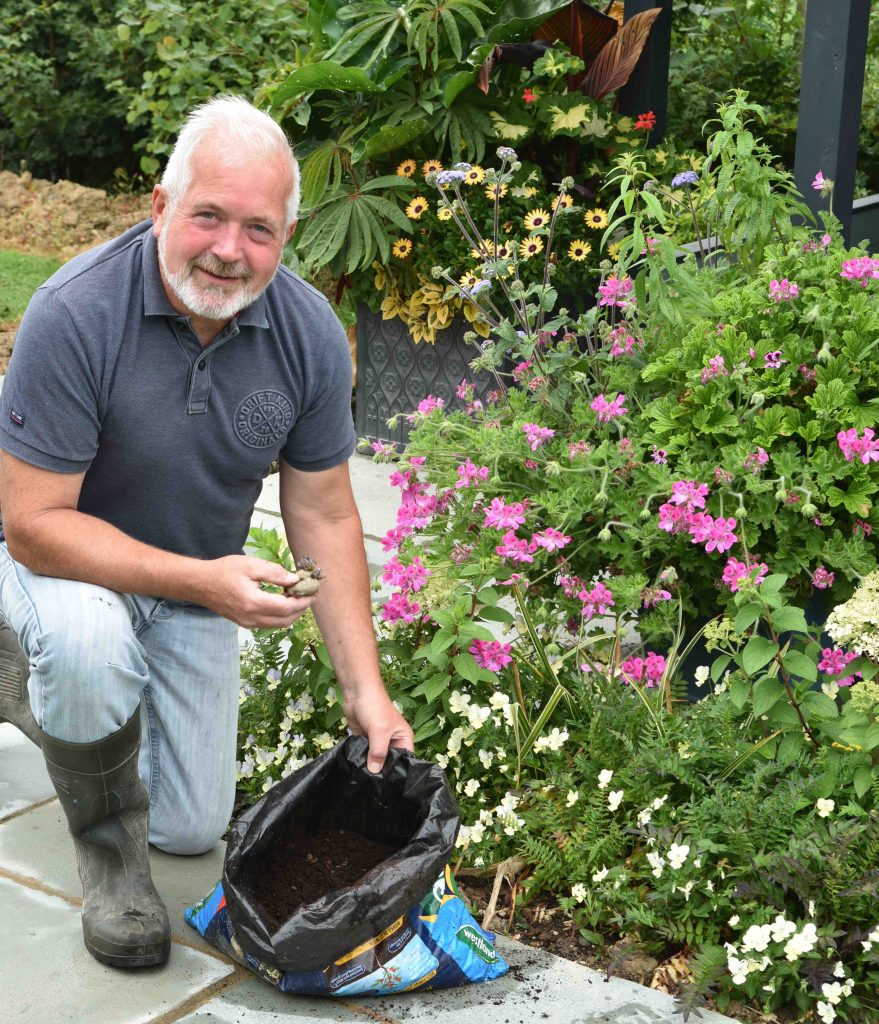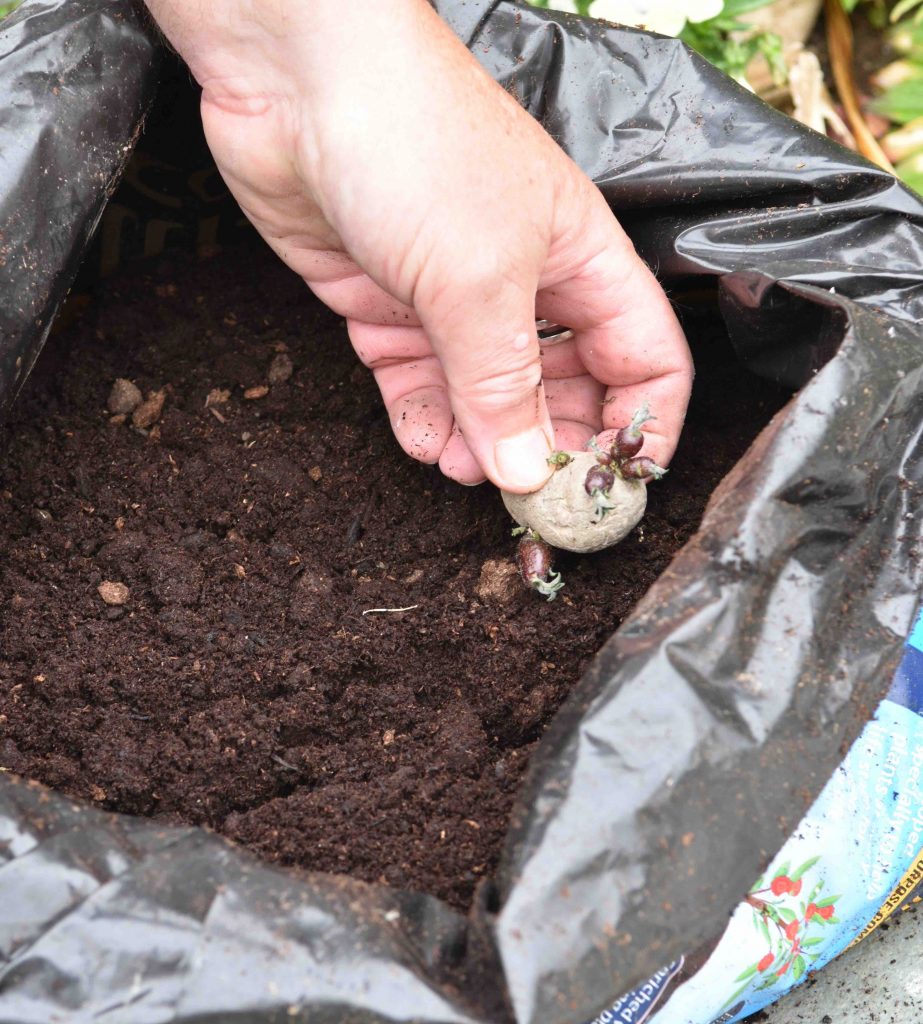
August is a month for harvesting rather than planting in the veg plot. Summer cabbages are ready, carrots are plumping up and onions should be starting to dry, ready to harvest and store. With cooler nights recently the runner beans should be setting their long pods, and French beans need picking. There should be lots of tomatoes ripening too but I will deal with them next week. Tomatoes are unusual because they start cropping while they are still growing but most crops are harvested at the end of the life of the plant.
Sweetcorn should be doing well as long as it was watered during the hot, dry spells. The cobs should be swelling and the ‘tassels’ at the ends give a clue as to when the cobs are ready to harvest. They are in a perfect state for a relatively short time so need to be picked when they are at the peak of sweetness. When the tassels are shrivelled you can test a cob. Pull back the ‘leaves’ to reveal the kernels at the tip and push your thumbnail in one to break the skin. If the juice runs out clear then they need a little longer. If the juice is milky then they are ready to pick. Left too long and they will be less sweet and will start to get tough – still fine for cooking but not perfect. When at their peak they will be tender and sweet enough to eat raw, straight off the plant. If you have grown an F1 variety such as ‘Lark’ the cobs will all be ready within about a week.
It is not unusual for the tips of the cobs to be bare of kernels (see above) but if there are lots of gaps between the kernels it means there was poor pollination, perhaps because you grew the plants in rows rather than a block.

Strawberry plants, unless they are ‘perpetual’ varieties, will have finished cropping. Because they may have mildew on the leaves it is best to tidy them up now by trimming off all the foliage and cutting away ‘runner’s unless you need to root them to make new plants. Strawberry plants are at their peak in their second year and then start to deteriorate and should always be replaced after their fourth year. After trimming, give a dressing of a general fertiliser and give them a good soak, if possible, so they make new growth, and recover from cropping, before winter.
There is not much you can plant right now and the weather is not really great for planting – it is better to wait until there is some rain to moisten the soil. In a month you can plant overwintered onions and a month after that garlic and later still sow broad beans and peas. But you can plant potatoes to get a crop of new potatoes for Christmas. You can buy seed potatoes to plant now at Nags Hall or you may have a few left over from spring that you can use if they were in good light and have short shoots.
You must plant these now because they need to make all their growth and produce a crop before the cold weather of November. At that stage they will die down but the tubers will be fresh in the compost until you need to harvest them in December. You do not need a greenhouse but it is useful if you have one, or a poly tunnel to protect them from frost at the end of autumn. But otherwise you can grow them on a patio and put them in the shed when they are frosted.

Growing is just like planting in spring. You can use a large flower pot but I use old compost bags – it is cheaper and, I think, easier. Use a 60-80 litre bag and roll down the sides so you have a container about 20cm (8in) high. Put about 15cm (6in) of multipurpose compost in the base and place two or three seed potatoes on this. Then cover with more compost and water.

As the shoots show, you just roll up the sides a little, add more compost to cover them and repeat two or three times. Keep them well watered and feed once a week with a general liquid fertiliser. By the end of October the foliage will be starting to yellow and the tubers will be well formed. If you have a greenhouse, put the bags in there before they get frosted and they will slowly die down. If not, leave them outside until frost kills the leaves and then put the bags in a shed to use later. Keeping them in moist compost prevents the skins getting tough.
Other Veg jobs
Pull off yellowing leaves of Brussels sprouts and kale. If left to drop off they will encourage slugs.
Harvest and dry or freeze herbs
Sow parsley for an overwintered crop that will be abundant in spring
You can sow leaf beet now for a winter crop too
If French beans have been left too long and are a bit tough you can let them mature and harvest them when the pods turn brown and use them as haricot beans.
Keep cucumbers moist at all times to help prevent mildew
Harvest courgettes when they are small to avoid a glut. If some have become large, cut them off and compost them, if you won’t eat them, to ensure the plants keep on cropping.